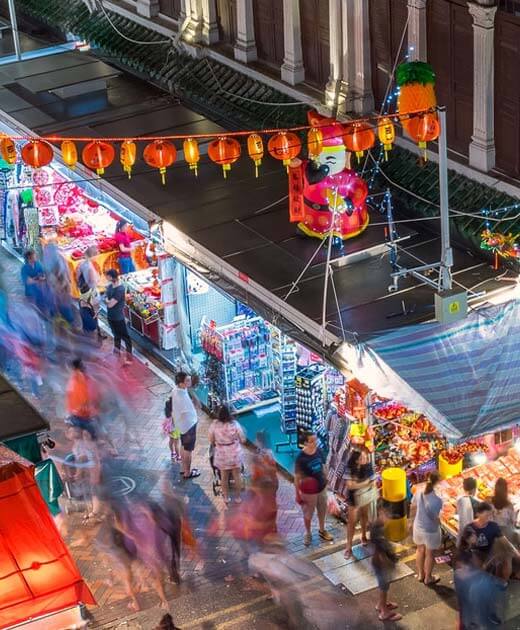
How your actions support your company’s larger travel strategy and meet local needs
When managing a local portion of a large, corporate hotel program, it’s important to think about how your actions support your company’s larger travel strategy and meet local needs.
These tips on corporate travel management in APAC will help you accomplish both.
1 Traveling within APAC has added complexity
Many countries in Asia Pacific require visas. It is often necessary to hire a driver, even for simple trips from the airport to the hotel. Throw in the unique local regulations, risk of fraud and misuse, and the immense diversity across this region, and you’ll find APAC can be very difficult to manage.
Work closely with experts or TMCs that have in-country experience to plan out your strategy before entering into these immensely complex markets.
2 Mobile adoption is everything in China
Of the 800 million active internet users in China, 98% of those are mobile* users. Today the Chinese do just about everything with their phones from communicating, to ordering taxis, paying rent, and applying for college. Among CWT clients, 90% of bookings in China are made online or with mobile booking platforms.
To support this high mobile usage, it’s important that you or your TMC is partnered with a Chinese based travel technology company such as TravelSky.
Although China is completely immersed in mobile, other parts of APAC, such as Bangladesh or Pakistan, still have lower adoption rates.**
* Source: Forbes "China Now Boasts More Than 800 Million Internet Users And 98% Of Them Are Mobile"
** GSMA "The Mobile Economy Asia Pacific 2018"
3 Per diems are heavily used
Per diems are popular in some Asian countries like India and China, but you won’t find them in Singapore, Australia and Hong Kong. Per diems can offer predictability and simplify travel expenses, but it is hard to adapt them equally to every market. Travelers might have too little when going to one city, but too much when going to a different city.
Per diems also incentivize travelers to stay at sub-par accommodations that minimize their expenditure and maximize the allotment they can pocket. The problem is this reduces your ability to influence booking behavior and it puts travelers at greater risk. Work with stakeholders in this region to educate them on the importance of using more policy-driven tools, like rate caps and price optimization tools, to help keep costs low and predictable.
4 Payment is COMPLEX
We discussed the high mobile usage in China, but it’s important to appreciate just how important mobile pay is too. There are restaurants that only accept mobile pay, and even the street vendors prefer payment via cell phone. It may be necessary to have travelers in the region setup WeChat Pay or Alipay, or visitors to the region may have to rely on a local to pay for meals and taxis.
Conversely, in smaller cities in other Asian countries, cash may be the only thing accepted. Although covering hotel rates with per diems might present problems for a travel program, keeping per diems in place for expenditures like food and taxis may still be a necessity.
5 Guest houses will be booked in India
India is the world’s fastest growing large economy in the world.* Hotel supply has been struggling to keep up with demand, so relying on less traditional properties in India is necessary. Guest houses are a very common, and acceptable form of housing for business travelers.
Work with your TMC and content provider in order to identify and upload guest houses into your corporate tools. Due to the nature of this lodging style, it is especially important that they are bookable, and more importantly, trackable through your corporate tools.
Learn more about accommodations in the Indian market
* Source: IMF "2018 World Economic Outlook forecast"
6 Expect to use traditional housing in Japan
Similar to India, Japan also experiences high demand in major cities and low supply in secondary and tertiary cities. Now, with the coming 2020 Olympics in Japan, many hotels have also been temporarily closing to refurbish, further exacerbating shortages. Ryokans (traditional Japanese inns) are being used more often by business travelers going to and traveling within Japan.
It’s a good idea to tell travelers about the appropriate options available to them throughout Japan while also instructing travelers about the proper booking practices. Just be sure people are made aware that ryokans are missing some modern hotel comforts, and that breakfast and dinner are usually included in the price.
7 The GDS isn't enough
If your only source for hotels are GDSs, then your travelers will find gaps in India, China and Thailand. Adding third-party hotel sources will help fill in those gaps. Even Australia, which is dominated by major chains and is therefore well covered by the GDSs, can benefit greatly from additional hotel sources.
A client was able to increase hotel attachment by nearly 10% in Australia after adopting third-party hotel content from RoomIt.
Additionally, the chain dominance in Australia has made it a very difficult market for negotiations. You may not be able to secure sizable discounts, but you can work to reduce some overall travel costs by including different expenses, like F&B, into your negotiations.
8 Rate policies can vary greatly
Quite often policies can be stricter and operate independently of global policies within the Asia Pacific region. Caps are more rigorously enforced in many cases, and they may be set per title hierarchy as well. This adds an additional layer of complexity if you are used to only setting caps by region or city.
If this is true for your APAC office, consider using tools that allow you to set seasonal cap rates, so you don’t have to waste as much time adjusting caps throughout the year. Start with your highest volume markets and the highest priced cities given prices tend to fluctuate more within higher priced cities. If you aren’t normally setting caps at a city level, you may want to reconsider this for APAC, since, for example, the average hotel rate in Seoul, South Korea is more than double that of Busan.*
* Source: Budget Your Trip
9 Some areas pose high travel risks
Although traveling within most of the Asian Pacific region is normally fine, there are areas that present high risk to travelers.
Be sure travelers know to check security risk levels (South Pacific nations present high travel risk to travelers)* before booking and are aware of safety tips before they take their trip:
- Learn local customs and etiquette
- If you can, start and end your days early to avoid being out at night
- Never walk alone on city streets at night
- Wear more conservative clothing
- Avoid street food and tap water in China, India, Taiwan and Thailand to name a few
- If taking the train, purchase the highest-class train tickets in advance
- Have emergency contact information available
* Source: International SOS Travel Risk Map
10 Be more creative with your sourcing
Considering the complexities of negotiating in this region, it’s a great idea to build a hotel program with longer term agreements and with a more diversified rate mix.
To begin, you should try to secure two-year deals on core hotels to reduce the hours spent negotiating in consecutive RFP seasons. This saves valuable resources and helps reduce sourcing costs.
Next, you should include dynamic pricing for markets with less buying power, or for when you need a quick win. Then trust your agency’s content to help cover the remaining gaps in your program. These parts of your rate mix, representing at least half of APAC hotel programs, covers your lower volume regions where standard fixed discounts won’t provide an optimal return on investment.
To ensure your program is running at peak performance, proactively monitor and manage your relationships with your suppliers throughout the year. Focus on pre-trip transactions so you can understand and plan for cost increases or potential missed savings opportunities, and continuously audit your rates and availability so you can increase inventory before markets become constrained.
BECOME A ROOMIT PARTNER
Ready to connect to our business travelers? Get in touch today.

